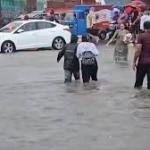On July 16, 2000, environmentalist Balbir Singh Seechewal, now a Rajya Sabha member and a Padma Shri awardee, stepped into a sludge-filled dying rivulet in Punjab, accompanied by a handful of volunteers — it was the beginning of a mission that completed 25 years on Wednesday. The mission mobilised lakhs of citizens and drew attention from national and global leaders, eventually transforming the toxic stream into a clean water body revered as a sacred site.
Though the journey was not easy, the Kali Bein movement changed the narrative around the river restoration, and its success — driven by volunteerism, spiritual motivation and grassroots engineering — inspired governments beyond Punjab. And today, it stands as a global model for river revival. The rivulet Kali Bein — literally “Black Rivulet” — a 165-km-long tributary of the Beas, originates in Dhanoa village near the Mukerian Hydel Project in Hoshiarpur district and flows through Kapurthala before merging with the Sutlej at Harike Pattan.
So filthy was the stream that people began calling it “Kali” (black) Bein, but for Sikhs, it was never just a water body; it was the sacred site where Guru Nanak, the first Sikh Guru and the founder of Sikhism, attained enlightenment. For Seechewal and his growing team of volunteers, it became a mission that combined spiritual reverence with ecological urgency.
What turned the rivulet ‘black’?
For decades, the Kali Bein served as an open drain for over 80 villages, small towns and industrial units based in Hoshiarpur, Kapurthala and Jalandhar. A major drain, Kala Sanghia, carrying industrial effluent, also emptied into it. Choked by weeds, garbage and untreated sewage, black water replaced fresh flow. Oxygen levels plummeted, and biodiversity vanished.
Now, 25 years later, only a few villages still discharge untreated water into the rivulet in the absence of sewer treatment plants. Six treatment plants have been established, primarily in towns, while in several villages, a pond system has been developed in such a way that sewage is treated and water is used for irrigation.








